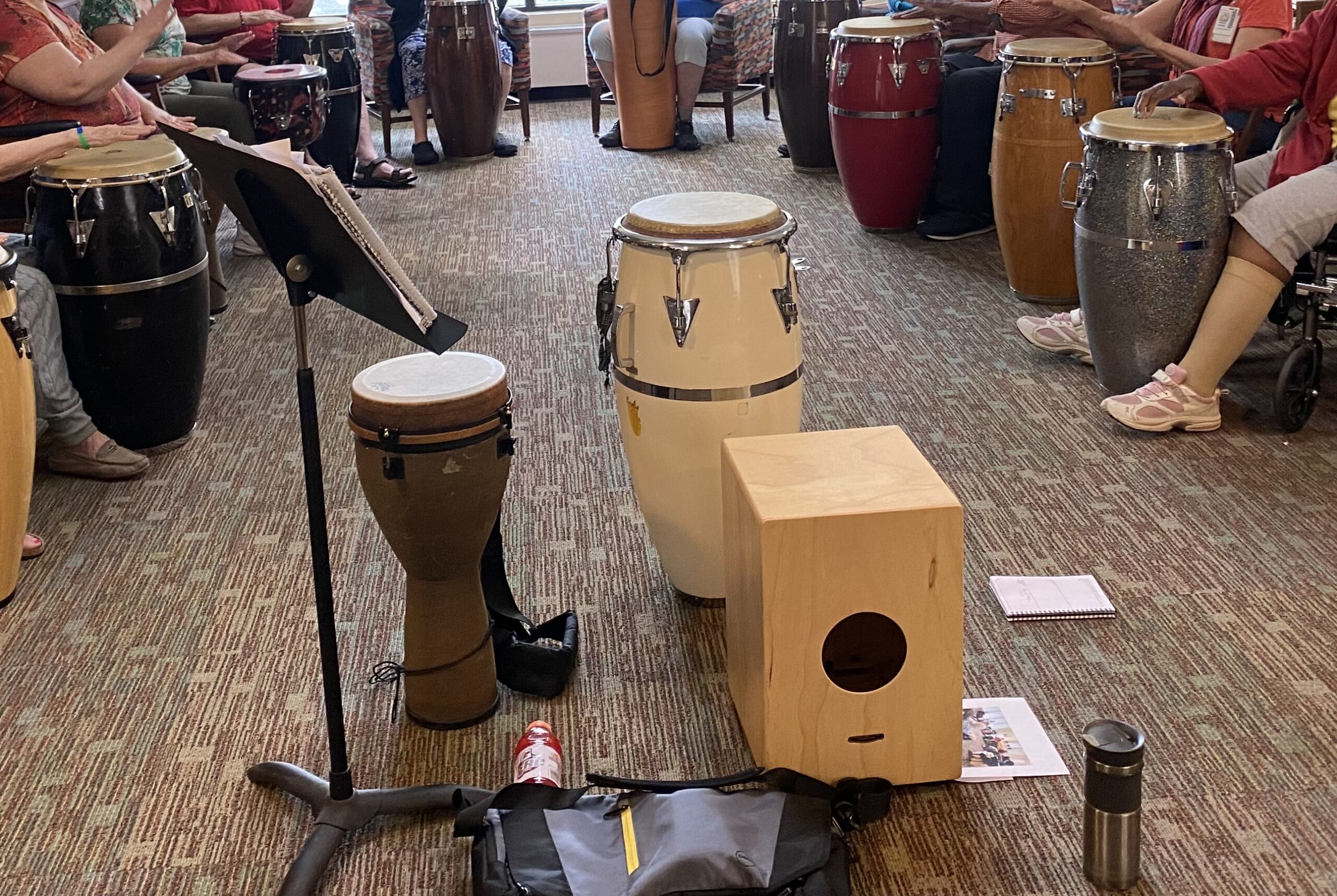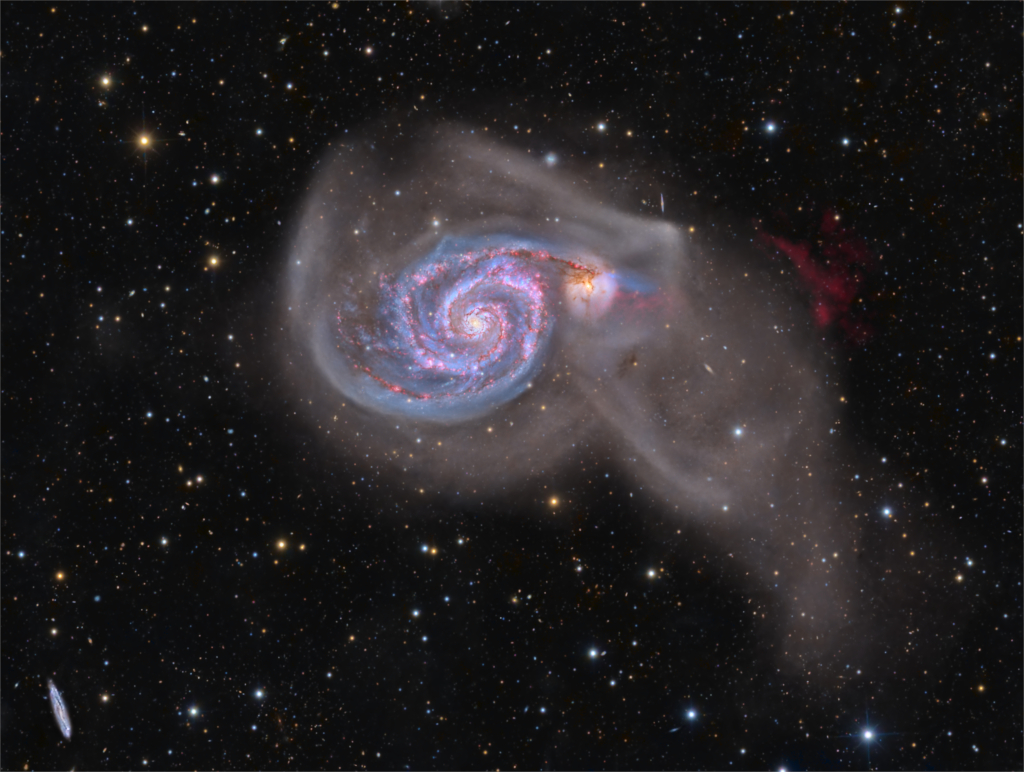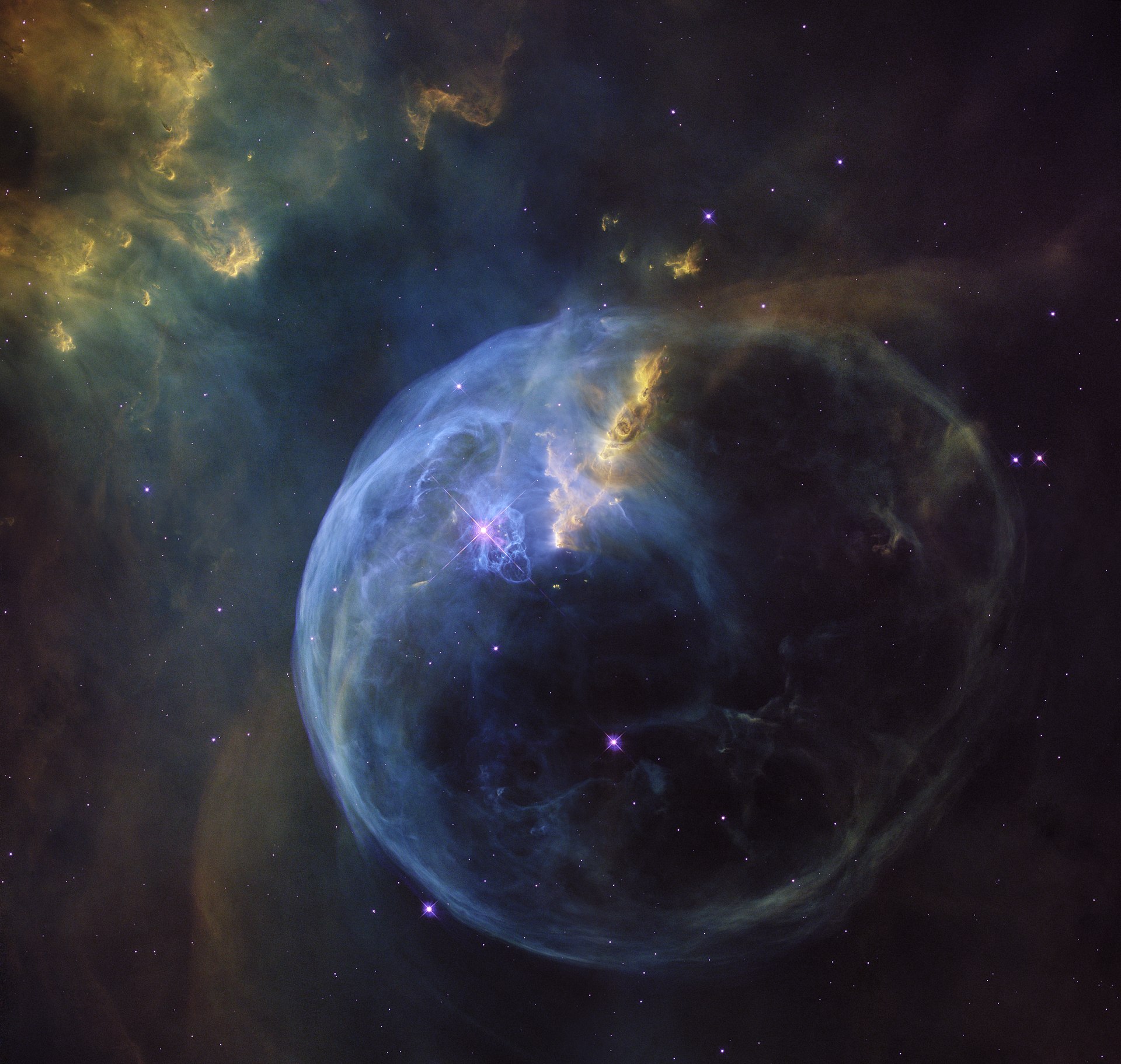Blog
Anna Mae Winburn (née Darden; August 13, 1913 – September 30, 1999) was an influential Americanvocalist and jazz bandleader who flourished beginning in the mid-1930s. An African American, she is best known for having directed the International Sweethearts of Rhythm, an all-female big band that was perhaps one of the few – and one of the most – racially integrated dance-bands of the swing era.
Her first known publicized performance was singing with the studio band of Radio WOWO, Fort Wayne. She worked at various clubs in Indiana, including the Chateau Lido in Indianapolis (where she appeared under the pseudonym Anita Door)
more...“Big Chief” Russell Moore (August 13, 1912 – December 15, 1983) was an American jazz trombonist.Moore, a Pima tribe member, grew up on a Native American reservation before moving to Chicago and then Los Angeles where he learned to play various instruments, eventually settling on trombone. Throughout his career, Moore worked with an array of artists including Frank Sinatra, Lionel Hampton, Alberta Hunter and Pee Wee Russell as well as recording under his own name. He is best remembered for his work as a member of Louis Armstrong’s band.
Moore was born in Gila Crossing, Arizona inside the Gila River Indian Community reservation in 1912 and belonged to the Pima tribe. He was one of five children born to mother Amy Bending Moore and father José Newton Moore. Musical performances were important to community life on the reservation particularly due to the inaccessibility of record players and radios.
more...A crowded field of galaxies fills this image from the James Webb Space Telescope, alongside a few bright stars crowned with Webb’s signature six-pointed diffraction spikes. The large spiral galaxy at the base of this image is accompanied by a menagerie of smaller, more distant galaxies, which range from fully fledged spirals to mere bright smudges. Named LEDA 2046648, it is situated a little more than a billion light-years from Earth, in the constellation Hercules.

Percy Mayfield (August 12, 1920 – August 11, 1984) was an American rhythm and blues singer with a smooth vocal style. He was also a songwriter, known for the songs “Please Send Me Someone to Love” and “Hit the Road Jack“, the latter being a song first recorded by Ray Charles.
Mayfield was born in Minden, Louisiana, the seat of Webster Parish, in the northwestern part of the state. As a youth, he had a talent for poetry, which led him to songwriting and singing. He began his performing career in Texas and then moved to Los Angeles in 1942, but without success as a singer until 1947, when a small record label, Swing Time Records, signed him to record his song “Two Years of Torture,” with a band that included the saxophonist Maxwell Davis, the guitarist Chuck Norris, and the pianist Willard McDaniel. The record sold steadily over the next few years, prompting Art Rupe to sign Mayfield to his label, Specialty Records, in 1950.
more...Alvis Edgar “Buck” Owens Jr. (August 12, 1929 – March 25, 2006) was an American musician, singer, songwriter, and band leader. He was the lead singer for Buck Owens and the Buckaroos, which had 21 No. 1 hits on the Billboard country music chart. He pioneered what came to be called the Bakersfield sound, named in honor of Bakersfield, California, Owens’s adopted home and the city from which he drew inspiration for what he preferred to call “American music”.
While the Buckaroos originally featured a fiddle and retained pedal steel guitar into the 1970s, their sound on records and onstage was always more stripped-down and elemental. The band’s signature style was based on simple story lines, infectious choruses, a twangy electric guitar, an insistent rhythm supplied by a prominent drum track, and high, two-part vocal harmonies featuring Owens and his guitarist Don Rich.
From 1969 to 1986, Owens co-hosted the popular CBS television variety show Hee Haw with Roy Clark(syndicated beginning in 1971). According to Owens’ son Buddy Alan, the accidental 1974 death of Don Rich, his closest friend, devastated him for years and impacted his creative efforts until he mounted a comeback in the late 1980s.
Owens is a member of both the Country Music Hall of Fame and Nashville Songwriters Hall of Fame.
Owens was born on a farm in Sherman, Texas, United States, to Alvis Edgar Owens Sr. and Maicie Azel (née Ellington) Owens.
In the biography About Buck., Rich Kienzle writes: “‘Buck’ was a donkey on the Owens farm.” “When Alvis Jr. was three or four years old, he walked into the house and announced that his name also was “Buck.” That was fine with the family, and the boy’s name became “Buck” from then on.” He attended public school for grades 1–3 in Garland, Texas.
Owens’ family moved to Mesa, Arizona, in 1937 during the Dust Bowl and Great Depression.
more...Patrick Bruce Metheny (/məˈθiːni/ mə-THEE-nee; born August 12, 1954) is an American jazz guitarist and composer.
He was the leader of the Pat Metheny Group (1977–2010) and continues to work in various small-combo, duet, and solo settings, as well as other side projects. His style incorporates elements of progressive and contemporary jazz, latin jazz, and jazz fusion. He has three gold albums and 20 Grammy Awards, and is the only person to have won Grammys in 10 categories. His older brother is jazz flugelhornist Mike Metheny.
Metheny was born in Lee’s Summit, Missouri. His father Dave played trumpet, his mother Lois sang, and his maternal grandfather Delmar was a professional trumpeter. Metheny’s first instrument was trumpet, which he was taught by his brother, Mike. Pat’s brother, father, and grandfather played trios together at home. His parents were fans of Glenn Miller and swing music. They took Pat to concerts to hear Clark Terry and Doc Severinsen, but they had little respect for guitar. Pat’s interest in guitar increased around 1964 when he saw the Beatles perform on TV. For his 12th birthday, his parents allowed him to buy a guitar, which was a Gibson ES-140 3/4.
more...Performing with the Temple Israel Erev Shabbat Service with Cantor Rachel Stock Spilker . Featuring Jayson Rodovsky, Jeff Bailey, Ernest Bisong, Pete Whitman and mick laBriola
more...
An intriguing pair of interacting galaxies, M51 is the 51st entry in Charles Messier’s famous catalog. Perhaps the original spiral nebula, the large galaxy with whirlpool-like spiral structure seen nearly face-on is also cataloged as NGC 5194. Its spiral arms and dust lanes sweep in front of a companion galaxy (right), NGC 5195. Some 31 million light-years distant, within the boundaries of the well-trained constellation Canes Venatici, M51 looks faint and fuzzy to the eye in direct telescopic views. But this remarkably deep image shows off stunning details of the galaxy pair’s striking colors and extensive tidal debris. A collaboration of astro-imagers using telescopes on planet Earth combined over 10 days of exposure time to create this definitive galaxy portrait of M51. The image includes 118 hours of narrowband data that also reveals a vast glowing cloud of reddish ionized hydrogen gas discovered in the M51 system.

Thornetta Davis (born August 11, 1963) is an American Detroit blues and rhythm and blues singer. She has opened for Bonnie Raitt, Gladys Knight, and Etta James, and sang backing vocals on Bob Seger‘s 1991 album, The Fire Inside. She also worked with Kid Rock and Alberta Adams, and has released three solo albums. Davis was born in Detroit, Michigan, United States.
After entering a local talent contest at the age of 15, Davis went on to join the group Jas which disbanded in 1983 and then she, and another former member of Jas, and two of her high school friends formed Chanteuse, a vocal group covering old R&B hits.
more...Michael John Hugg (born 11 August 1940) is a British musician who was a founding member of the 1960s group Manfred Mann. Pursuing a career in jazz, he met the pianist Manfred Mann while working as a musician at Butlin’s Clacton, and they formed a seven-piece group. The Mann–Hugg Blues Brothers recruited Paul Jones and later Tom McGuinness. Upon their signing with HMV Records, their producer, John Burgess, changed their name to Manfred Mann.
more...Manabendra Mukhopadhyay was an Indian singer and music composer in Bengali films. Coming to limelight in the early 1950s Manabendra was an innovative and stylish singer who had a strong foundation in Indian classical music. With his distinctive voice, Manabendra was an instant hit with the audience. demonstrating great talent also as a composer, using the lyrics and melody of a song with good effect. At that time Bengali modern song world had the presence of some outstanding performers like Dhananjay Bhattacharya, Manna Dey, Satinath Mukherjee, Akhilbandhu Ghosh, Hemanta Mukhopadhyay to name a few.
It is considered that during the 1950s, 1960s and 1970s the Bengali modern songs reached their peak of excellence and that period is usually called the “Golden age of Bengali Adhunik Songs”. At that time Bengal had a unique mix of singers which inspired composers and lyricists to create innumerable treasure of creative music. Each singer had his own inimitable style and compositions were made to match their individual ability. Bengali non-film modern songs were in fact was as popular, if not more, than film songs which also reached a level of popularity in the 1950s and 1960s.
more...Russell Keith Procope (August 11, 1908 – January 21, 1981) was an American clarinetist and alto saxophonist who was a member of the Duke Ellington orchestra.
Procope was born in New York City, United States, and grew up in San Juan Hill, where he attended school with Benny Carter. His first instrument was the violin, but he switched to clarinet and alto saxophone. He began his professional career in 1926 as a member of Billy Freeman’s orchestra. He recorded with Jelly Roll Morton at the age of 20, and played with bands led by Benny Carter, Chick Webb(1929–30), Fletcher Henderson (spring of 1931 to 1934), Tiny Bradshaw, Teddy Hill, King Oliver, and Willie Bryant.
Fletcher Henderson’s band dissolved in 1934. Along with several other ex-Henderson musicians, Procope joined Benny Carter’s orchestra. He also worked for a time with the Tiny Bradshaw and Willie Bryant bands before joining Teddy Hill in 1935. During his stay with Teddy Hill’s orchestra the trumpet section included, at various times, Roy Eldridge, Bill Coleman, Frankie Newton, and Dizzy Gillespie, while trombonist Dickie Wells and tenor-saxophonist Chu Berry were two other soloists who played with the band. It was as a member of this orchestra that Russell Procope made his first trip to Europe in 1937; Teddy Hill’s band formed part of The Cotton Club Revue, an all-African American show, which during its European tour appeared at the London Palladium.
more...The city of Huelva on the coast of Spain between Portugal and Cádiz is closely identified with the Fandangos. There are 32 types of Fandangos de Huelva, each associated with a different part of the city, the nearby mountains or coast, or with individual artists. The underlying form for all these Fandangos is the same, and the variations are in the melodies, lyrics, and the supporting harmony. The most frequently performed version of the Fandangos de Huelva is the Fandangos de Alosno, named for a village north of Huelva.
The most common setting for Fandangos de Huelva is a group of friends gathered around a table after a meal or drinks. The guitarist provides constant accompaniment while individual singers provide letras or the group sings in chorus.
The dance is popular during the annual pilgrimage to Rocio – the Romería del Rocio. Participants in this event dress in traditional costume and travel on foot, by car or in brightly decorated horse- or ox-drawn wagons. All converge in the city of Rocio to participate in a weekend of religious ritual and fun.
Today, the dances and songs are also popular in Spanish dance companies and in smaller flamenco performances, and are mostly accompanied by the guitar, cante, and castanets.The copla consists of five eight syllable lines. One line of the verse is usually repeated, making a six line verse.
The underlying form of Fandangos de Huelva is the underlying form for all Fandangos Comarcales.
Some artists have modified this form slightly. For example, cantaor Paco Toronjo, a singer closely associated with Fandangos, would often begin a Fandangos by singing por Siguiriyas.
more...NGC 7635, also known as the Bubble Nebula, Sharpless 162, or Caldwell 11, is an H II region emission nebula in the constellation Cassiopeia. It lies close to the open cluster Messier 52. The “bubble” is created by the stellar wind from a massive hot, 8.7 magnitude young central star, SAO 20575 (BD+60°2522). The nebula is near a giant molecular cloud which contains the expansion of the bubble nebula while itself being excited by the hot central star, causing it to glow. It was discovered in November 1787 by William Herschel. The star BD+60°2522 is thought to have a mass of about 44 M.

The Bubble Nebula
More Posts
- World Music with Beginish
- Daily Roots with Ijahman Levi
- The Cosmos with M100
- Branford Marsalis Day
- Leon Redbone Day
- World Music with Gjallarhorn
- Daily Roots with Horace Andy
- The Cosmos with NGC 6820/3
- Pat Martino Day
- Wayne Shorter Day
- World Music with Songhoy Blues
- Daily Roots with Johnny Osborne
- The Cosmos with NGC 4100
- Jim Capaldi Day
- Arthur “Big Boy” Crudup Day
- World Music with Cayetano Moreno Castro
- Daily Roots with Cornell Campbell
- The Cosmos with NGC 6503
- Keith Moon Day
- Terje Rypdal Day